Composite Decking
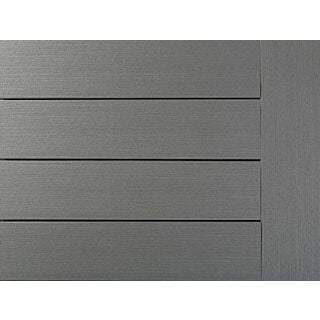 TimberTech Composite™ Decking, Prime Collection, Maritime Gray, 20 ft., Square Edge SKU: 54620MGWas $65.00 Now $55.00Piece
TimberTech Composite™ Decking, Prime Collection, Maritime Gray, 20 ft., Square Edge SKU: 54620MGWas $65.00 Now $55.00Piece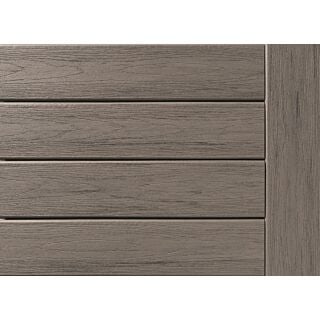 TimberTech Composite™ Decking, Reserve Collection, Driftwood, 20 ft., Square Edge SKU: 54620DWWas $129.00 Now $110.00Piece
TimberTech Composite™ Decking, Reserve Collection, Driftwood, 20 ft., Square Edge SKU: 54620DWWas $129.00 Now $110.00Piece TimberTech Composite® Decking, Prime Collection, Maritime Gray, 20 ft., Grooved Edge SKU: 54620MGGWas $65.00 Now $55.00Piece
TimberTech Composite® Decking, Prime Collection, Maritime Gray, 20 ft., Grooved Edge SKU: 54620MGGWas $65.00 Now $55.00Piece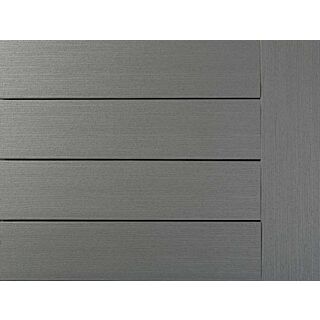 TimberTech Composite® Decking, Prime Collection, Maritime Gray, 16 ft., Grooved Edge SKU: 54616MGGWas $52.00 Now $44.00Piece
TimberTech Composite® Decking, Prime Collection, Maritime Gray, 16 ft., Grooved Edge SKU: 54616MGGWas $52.00 Now $44.00Piece TimberTech® PRO® Reserve Collection Composite Decking, Driftwood, 20 ft., Grooved Edge SKU: 54620DWGWas $129.00 Now $110.00Piece
TimberTech® PRO® Reserve Collection Composite Decking, Driftwood, 20 ft., Grooved Edge SKU: 54620DWGWas $129.00 Now $110.00Piece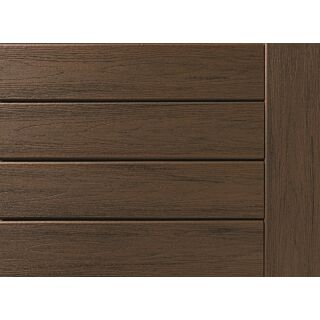 TimberTech Composite™ Decking, Reserve Collection, Dark Roast™, 20 ft., Square Edge SKU: 54620DRWas $129.00 Now $110.00Piece
TimberTech Composite™ Decking, Reserve Collection, Dark Roast™, 20 ft., Square Edge SKU: 54620DRWas $129.00 Now $110.00Piece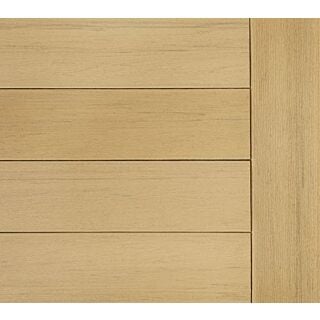 Timbertech Composite™ Decking, Terrain+ Collection™, Natural White Oak, 12 ft., Grooved Edge SKU: 54612NWGWas $55.80 Now $46.20Piece
Timbertech Composite™ Decking, Terrain+ Collection™, Natural White Oak, 12 ft., Grooved Edge SKU: 54612NWGWas $55.80 Now $46.20Piece Timbertech Composite™ Decking, Terrain+ Collection™, Natural White Oak, 16ft., Grooved Edge SKU: 54616NWGWas $74.40 Now $61.60Piece
Timbertech Composite™ Decking, Terrain+ Collection™, Natural White Oak, 16ft., Grooved Edge SKU: 54616NWGWas $74.40 Now $61.60Piece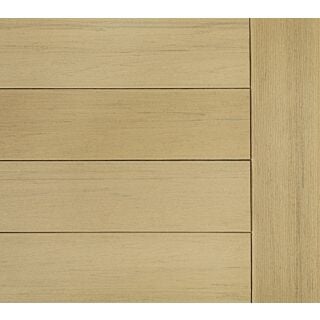 Timbertech Composite™ Decking, Terrain+ Collection™, Natural White Oak, 20 ft., Square Edge SKU: 54620NWWas $93.00 Now $77.00Piece
Timbertech Composite™ Decking, Terrain+ Collection™, Natural White Oak, 20 ft., Square Edge SKU: 54620NWWas $93.00 Now $77.00Piece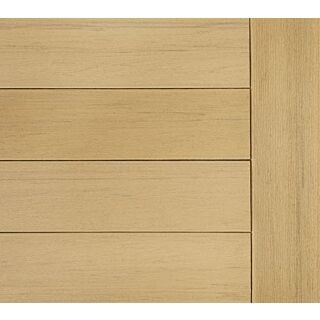 Timbertech Composite™ Decking, Terrain+ Collection™, Natural White Oak, 20 ft., Grooved Edge SKU: 54620NWGWas $93.00 Now $77.00Piece
Timbertech Composite™ Decking, Terrain+ Collection™, Natural White Oak, 20 ft., Grooved Edge SKU: 54620NWGWas $93.00 Now $77.00Piece TimberTech Composite™ Decking, Reserve Collection, Driftwood, 16 ft., Grooved Edge SKU: 54616DWGWas $103.20 Now $88.00Piece
TimberTech Composite™ Decking, Reserve Collection, Driftwood, 16 ft., Grooved Edge SKU: 54616DWGWas $103.20 Now $88.00Piece TimberTech Composite™ Decking, Reserve Collection, Driftwood, 16 ft., Square Edge SKU: SOCD-TTRC5416DW-SQ$115.54
TimberTech Composite™ Decking, Reserve Collection, Driftwood, 16 ft., Square Edge SKU: SOCD-TTRC5416DW-SQ$115.54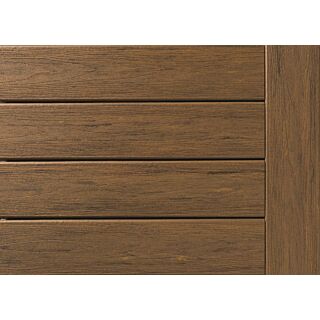 TimberTech Composite™ Decking, Reserve Collection, Antique Leather™, 20 ft., Square Edge SKU: SOCD-54620AL-SQ$144.44
TimberTech Composite™ Decking, Reserve Collection, Antique Leather™, 20 ft., Square Edge SKU: SOCD-54620AL-SQ$144.44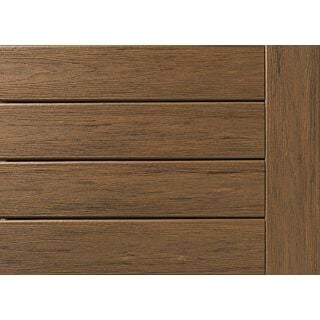 TimberTech Composite™ Decking, Reserve Collection, Antique Leather™, 16 ft., Square Edge SKU: SOCD-TTRC5416AL-SQ$115.54
TimberTech Composite™ Decking, Reserve Collection, Antique Leather™, 16 ft., Square Edge SKU: SOCD-TTRC5416AL-SQ$115.54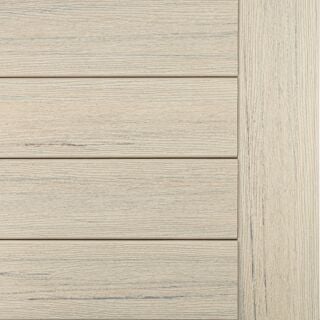 TimberTech Composite™ Decking, Reserve Collection, Reclaimed Chestnut, 16 ft. Square Edge SKU: SOCD-TTRC5416RC-SQ$115.54
TimberTech Composite™ Decking, Reserve Collection, Reclaimed Chestnut, 16 ft. Square Edge SKU: SOCD-TTRC5416RC-SQ$115.54 TimberTech Composite® Decking, Prime Collection, Maritime Gray, 12 ft., Grooved Edge SKU: 54612MGGWas $39.00 Now $33.00Piece
TimberTech Composite® Decking, Prime Collection, Maritime Gray, 12 ft., Grooved Edge SKU: 54612MGGWas $39.00 Now $33.00Piece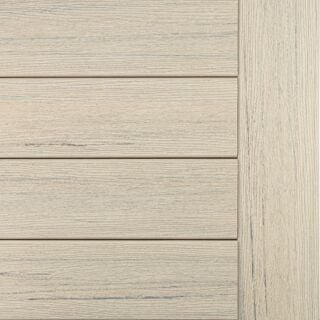 TimberTech Composite™ Decking, Reserve Collection, Reclaimed Chestnut, 20 ft. Grooved Edge SKU: SOCD-TTRCGV5420RC-GR$144.44
TimberTech Composite™ Decking, Reserve Collection, Reclaimed Chestnut, 20 ft. Grooved Edge SKU: SOCD-TTRCGV5420RC-GR$144.44 TimberTech Composite™ Decking, Reserve Collection, Driftwood, 12 ft., Grooved Edge SKU: 54612DWGWas $77.40 Now $66.00Piece
TimberTech Composite™ Decking, Reserve Collection, Driftwood, 12 ft., Grooved Edge SKU: 54612DWGWas $77.40 Now $66.00Piece TimberTech Composite™ Decking, Reserve Collection, Antique Leather™, 16 ft., Grooved Edge SKU: SOCD-54616AL-GR$115.54
TimberTech Composite™ Decking, Reserve Collection, Antique Leather™, 16 ft., Grooved Edge SKU: SOCD-54616AL-GR$115.54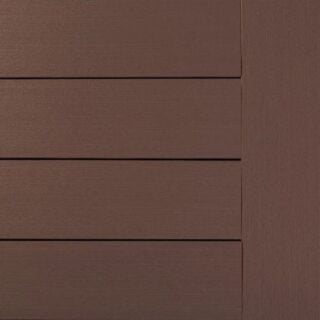 TimberTech Composite™ Decking, Prime Collection, Dark Teak, 20 ft., Grooved Edge SKU: SOCD-TTESGV5420DT-GR$69.20
TimberTech Composite™ Decking, Prime Collection, Dark Teak, 20 ft., Grooved Edge SKU: SOCD-TTESGV5420DT-GR$69.20 TimberTech Composite™ Decking, Reserve Collection, Dark Roast™, 20 ft., Grooved Edge SKU: 54620DRGWas $129.00 Now $110.00Piece
TimberTech Composite™ Decking, Reserve Collection, Dark Roast™, 20 ft., Grooved Edge SKU: 54620DRGWas $129.00 Now $110.00Piece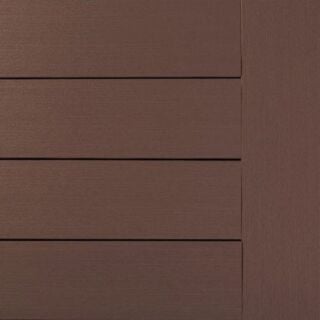 TimberTech Composite™ Decking, Prime Collection, Dark Teak, 20 ft., Square Edge SKU: SOCD-TTES5420DT-SQ$69.20
TimberTech Composite™ Decking, Prime Collection, Dark Teak, 20 ft., Square Edge SKU: SOCD-TTES5420DT-SQ$69.20 TimberTech Composite™ Decking, Prime Collection, Dark Teak, 16 ft., Grooved Edge SKU: SOCD-TTESGV5416DT-GR$55.36
TimberTech Composite™ Decking, Prime Collection, Dark Teak, 16 ft., Grooved Edge SKU: SOCD-TTESGV5416DT-GR$55.36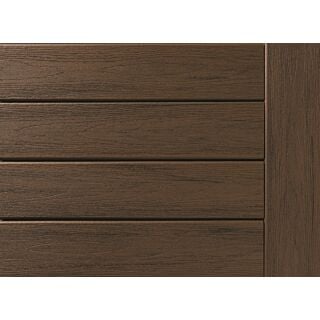 TimberTech Composite™ Decking, Reserve Collection, Dark Roast™, 16 ft., Square Edge SKU: SOCD-TTRC5416DR-SQ$115.54
TimberTech Composite™ Decking, Reserve Collection, Dark Roast™, 16 ft., Square Edge SKU: SOCD-TTRC5416DR-SQ$115.54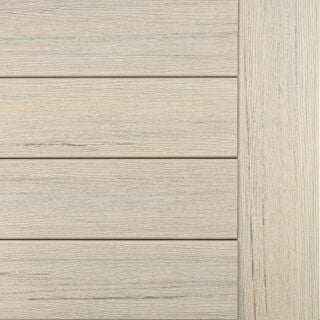 TimberTech Composite™ Decking, Reserve Collection, Reclaimed Chestnut, 16 ft. Grooved Edge SKU: SOCD-TTRCGV5416RC-GR$115.54
TimberTech Composite™ Decking, Reserve Collection, Reclaimed Chestnut, 16 ft. Grooved Edge SKU: SOCD-TTRCGV5416RC-GR$115.54 TimberTech Composite™ Decking, Reserve Collection, Dark Roast™, 16 ft., Grooved Edge SKU: 54616DRGWas $103.20 Now $88.00Piece
TimberTech Composite™ Decking, Reserve Collection, Dark Roast™, 16 ft., Grooved Edge SKU: 54616DRGWas $103.20 Now $88.00Piece TimberTech Composite™ Decking, Reserve Collection, Antique Leather™, 20 ft., Grooved Edge SKU: SOCD-54620AL-GR$144.44
TimberTech Composite™ Decking, Reserve Collection, Antique Leather™, 20 ft., Grooved Edge SKU: SOCD-54620AL-GR$144.44 TimberTech Composite™ Decking, Prime Collection, Dark Teak, 12 ft., Grooved Edge SKU: SOCD-TTESGV5412DT-GR$41.52
TimberTech Composite™ Decking, Prime Collection, Dark Teak, 12 ft., Grooved Edge SKU: SOCD-TTESGV5412DT-GR$41.52 TimberTech Composite™ Decking, Prime Collection, Maritime Gray, 16 ft., Square Edge SKU: SOCD-TTES5416MG-SQ$55.36
TimberTech Composite™ Decking, Prime Collection, Maritime Gray, 16 ft., Square Edge SKU: SOCD-TTES5416MG-SQ$55.36 TimberTech Composite™ Decking, Reserve Collection, Dark Roast™, 12 ft., Grooved Edge SKU: 54612DRGWas $77.40 Now $66.00Piece
TimberTech Composite™ Decking, Reserve Collection, Dark Roast™, 12 ft., Grooved Edge SKU: 54612DRGWas $77.40 Now $66.00Piece TimberTech Composite™ Decking, Reserve Collection, Reclaimed Chestnut, 20 ft. Square Edge SKU: SOCD-TTRC5420RC-SQ$144.44
TimberTech Composite™ Decking, Reserve Collection, Reclaimed Chestnut, 20 ft. Square Edge SKU: SOCD-TTRC5420RC-SQ$144.44 TimberTech Composite™ Decking, Prime Collection, Dark Teak, 16 ft., Square Edge SKU: SOCD-TTES5416DT-SQ$55.36
TimberTech Composite™ Decking, Prime Collection, Dark Teak, 16 ft., Square Edge SKU: SOCD-TTES5416DT-SQ$55.36 TimberTech Composite™ Decking, Reserve Collection, Antique Leather™, 12 ft., Grooved Edge SKU: SOCD-54612AL-GR$86.66
TimberTech Composite™ Decking, Reserve Collection, Antique Leather™, 12 ft., Grooved Edge SKU: SOCD-54612AL-GR$86.66 TimberTech Composite™ Decking, Reserve Collection, Reclaimed Chestnut, 12 ft. Grooved Edge SKU: SOCD-TTRCGV5412RC-GR$86.66
TimberTech Composite™ Decking, Reserve Collection, Reclaimed Chestnut, 12 ft. Grooved Edge SKU: SOCD-TTRCGV5412RC-GR$86.66 Timbertech Composite™ Decking, Terrain+ Collection™, Dark Oak, 12 ft., Grooved SKU: SOCD-54612DO-GR$58.42
Timbertech Composite™ Decking, Terrain+ Collection™, Dark Oak, 12 ft., Grooved SKU: SOCD-54612DO-GR$58.42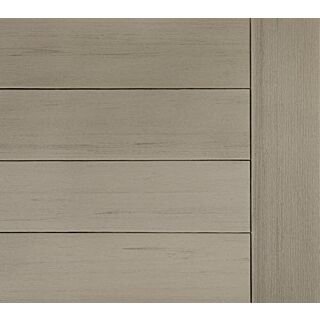 Timbertech Composite™ Decking, Terrain+ Collection™, Weathered Oak, 12 ft., Grooved SKU: SOCD-54612WO-GR$58.42
Timbertech Composite™ Decking, Terrain+ Collection™, Weathered Oak, 12 ft., Grooved SKU: SOCD-54612WO-GR$58.42
Learn More from the Top Composite Decking Supplier in Connecticut and the Surrounding Area
Composite decking is a type of engineered deck board made with a blend of organic wood flakes and plastic. Composite deck boards can be partially or fully encapsulated, meaning the boards are covered on three or four sides. This outer capping ensures the boards are protected from mildew and rot, and they will not fade from the sun.
Where can I buy composite decking?
Ring’s End sells TimberTech decking throughout the Northeast. You can visit a Ring End’s lumberyard to see TimberTech product samples, talk to an expert, and place your order, or you can order online for in-store pick up or delivery within our network. Ring’s End has store locations on the Eastern Connecticut shoreline, including Stamford, Darien, Wilton, and Wethersfield, Connecticut. In addition to our many stores in Connecticut, Ring’s End also has stores located in the Boston, MA area, Lewisboro, NY, and Portland, ME.
How long does composite decking last?
With the Northeast’s extreme weather temperatures, composite decking provides durability that far exceeds that of natural wood. Composite decking typically lasts between 25 to 30 years or more with proper maintenance. Its durable construction, consisting of a blend of wood fibers and recycled plastic, resists rot, decay, and insect damage, ensuring a long-lastingoutdoor living space that withstands the test of time.
Who carries a quality line of composite decking materials for a porch, patio, or deck?
Ring's End sells the TimberTech line by Azek, one of the top brands of composite decking backed by a 30-Year Fade and Stain Warranty! Click on any products above for more information.
Should I choose grooved-edge or square-edge deck boards?
If you install grooved-edge boards, you won't see any screws because they use hidden deck fasteners, which some homeowners prefer. Or you can use screws to install solid-edge boards, but there is one installation warning that goes with this method: If the screws aren’t flat against the decking, furniture legs and shoes can catch on them. If you use the screwed-down method to install the decking, you might want to fill the holes with a small round plug that matches the deck. Whichever type of deck installation you choose, it's important to have a space between the boards for proper drainage.
How long are composite decking boards?
Composite deck boards measure 5/4" thick x 6" wide and come in lengths of 12 ft., 16 ft., and 20 ft. The composite materials are easy to cut, so you can trim the longer boards to the size you need to fill in shorter porch or deck areas.
Is composite decking worth the cost?
If all the benefits and data listed above don't convince you that your new deck should be constructed with composite boards and railings, then consider this: when you account for the rest of the costs associated with maintaining a wood deck (that already will have a shorter lifespan!), composite decking comes out ahead as a better value.
